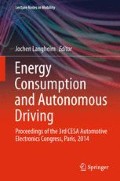Abstract
Advanced Driver Assistant Systems (ADAS) are constantly improving in performance and fitment rates in modern cars. While in the past parking aids have been a driver’s selection for a price premium, today most vehicles offer park distance control as a standard configuration. When developing driver assistant systems it is important to select the most suitable technology. Parking aids for instance typically rely on ultrasonic or camera sensors. In premium cars a combination of both sensor technologies is implemented to improve the system reliability and at the same time increase the user’s benefit. A single CMOS imager camera cannot measure the distance of an object but an image is a good method to interact with the driver. Hence, the fusion of sensors results to more sophisticated systems. The availability of multiple assistant systems in a vehicle will ultimately lead to autonomous driving. Today, autonomous or semi-autonomous driving is used for low-speed parking maneuvers. Mainly undefined legislation framework is slowing down a wider adoption rate. Recently US government has lowered the requirements for self-driving vehicles. Can autonomous cars be sold as soon as 2015? This paper reviews different sensing technologies for driver assistant systems, highlights the benefits and necessity of sensor fusion and presents an optimized approach for utilizing infrared time-of-flight (TOF) sensors to implement cost efficient, reliable, scalable and precise environmental sensing for driver assistance and comfort applications.
Access this chapter
Tax calculation will be finalised at checkout
Purchases are for personal use only
References
Elkhalili O (2005) Entwicklung von optischen 3D Bildsensoren auf der Basis der Pulslaufzeitmessung. Dissertation, University Duisburg
Fuchs S, Hirzinger G (2008) Extrinsic and depth calibration of ToF-cameras, DLR, Institute of Robotics and Mechatronics, Oberpfaffenhofen, Germany, Computer Vision and Pattern Recognition, IEEE
Peter C, Schwope S Applications for 3D sensor technology in security business, TriDiCam GmbH, Application note
Ringbeck T, Moeller T, Hagebeuker B (2007) Multidimensional measurement by using 3-D PMD sensors. Advances in Science, pp 135–146
Author information
Authors and Affiliations
Corresponding author
Editor information
Editors and Affiliations
Rights and permissions
Copyright information
© 2016 Springer International Publishing Switzerland
About this paper
Cite this paper
Rix, B., Nebeling, A., Raab, T. (2016). Distance Measurement Using Near Infrared Sensors. In: Langheim, J. (eds) Energy Consumption and Autonomous Driving. Lecture Notes in Mobility. Springer, Cham. https://doi.org/10.1007/978-3-319-19818-7_18
Download citation
DOI: https://doi.org/10.1007/978-3-319-19818-7_18
Published:
Publisher Name: Springer, Cham
Print ISBN: 978-3-319-19817-0
Online ISBN: 978-3-319-19818-7
eBook Packages: EnergyEnergy (R0)

